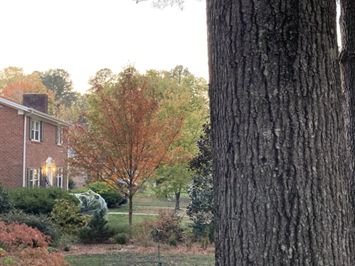If you’re a tree lover like me, the thought of losing mature specimen trees is a real concern. In my garden I have a mature Willow Oak (Quercus phellos) that reaches well over the house, offering shade, wildlife habitat, and a canopy that adds a sense of maturity to my garden. I love this tree and would hate to lose it.
Several weeks ago a report on tree canopy loss in Wake County was widely reported on – including this article from WRAL. Additionally, this summer Duke Hospital clocked a 72mph wind speed recording on their roof, which is just one mile from my house. Thankfully, our oak lost just a few branches with limited damage, but it was a reminder that as our weather becomes more unpredictable, planning for future tree loss is a good idea.

A few years ago I looked at our mature tree canopy and began a process of succession planning, where I identified what each tree contributed to our property and thought about a tree successor that I could plant now. Our mature oak is located on the north east side of our house, so I decided to add a shade tree to the northwest side of the property. I selected a Green Gable Black Gum (Nyssa sylvatica ‘Green Gable’) which is a native tree with fantastic red and orange fall color. My Black Gum has grown quickly, and while I would still hate to lose our oak, I’m glad to have another tree that will provide similar canopy, as well as some relief from the western sun, as it matures.
An old quote says “The best time to plant a tree was 20 years ago. The second best time is now.” If you need help identifying succession options for the trees on your property complete our contact form. We look forward to assisting you with your landscaping.
